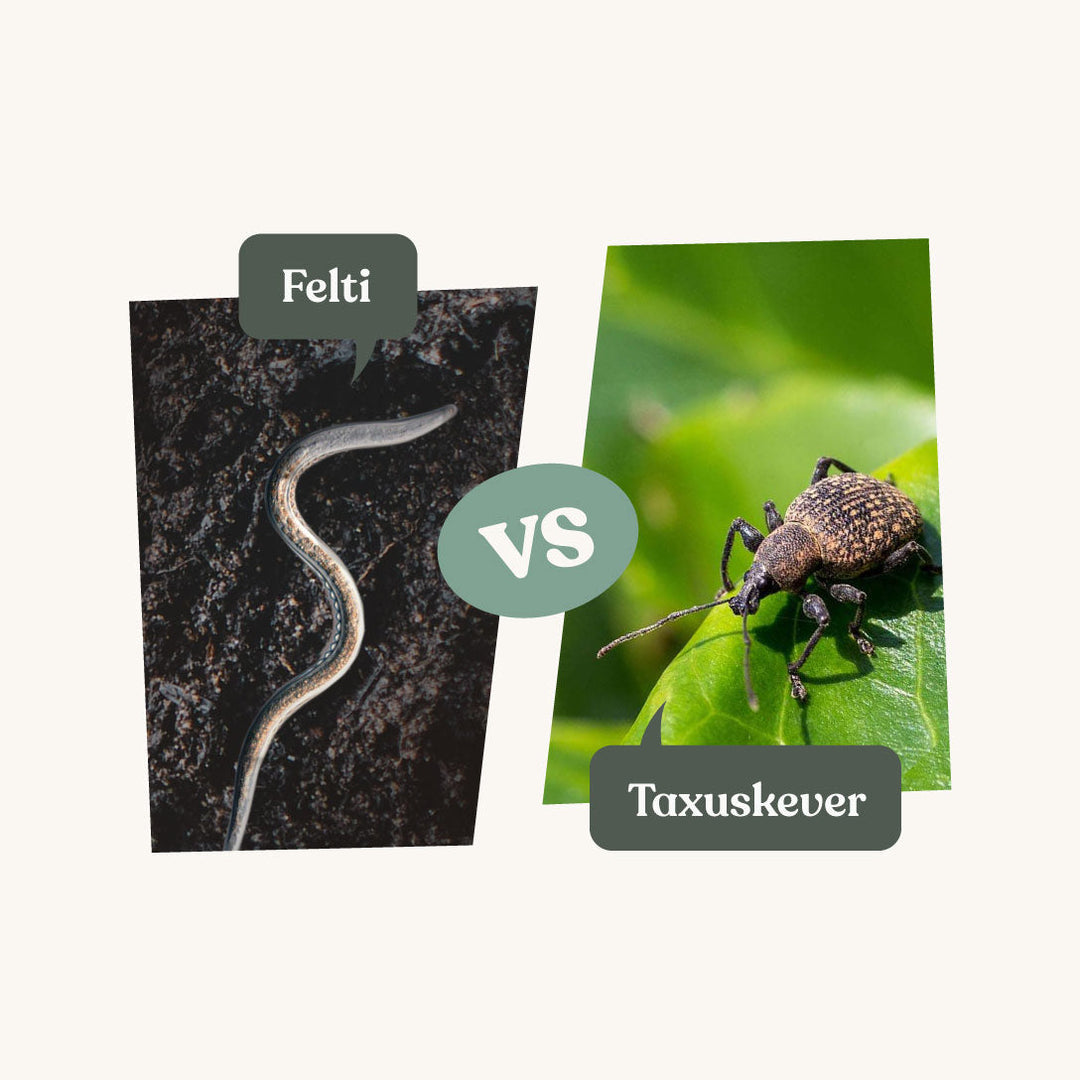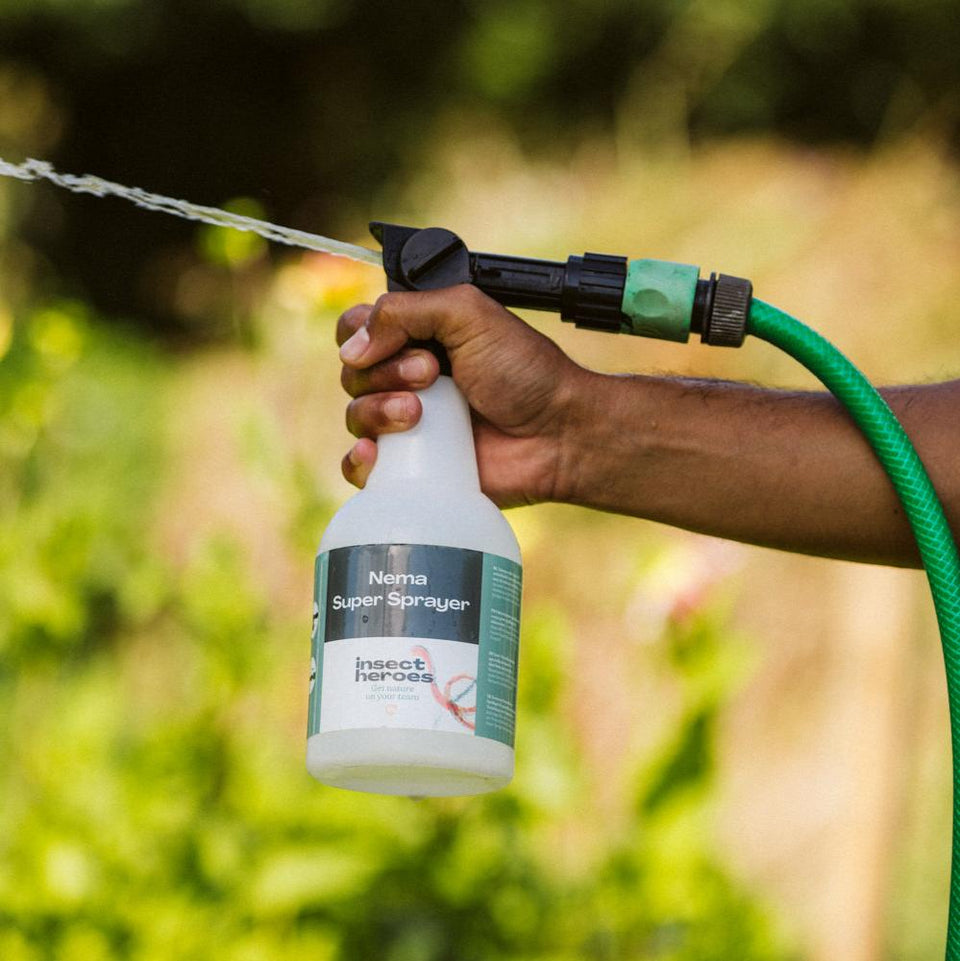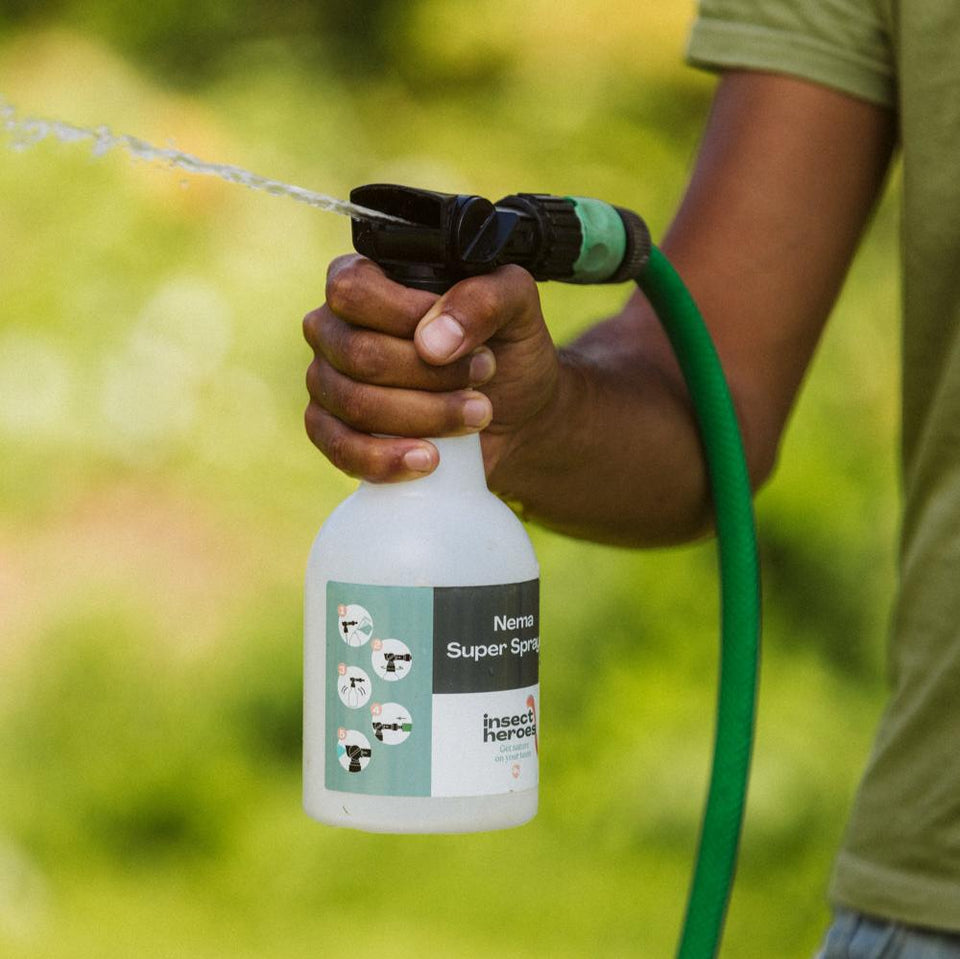- Home
- Vine weevil
Vine weevil
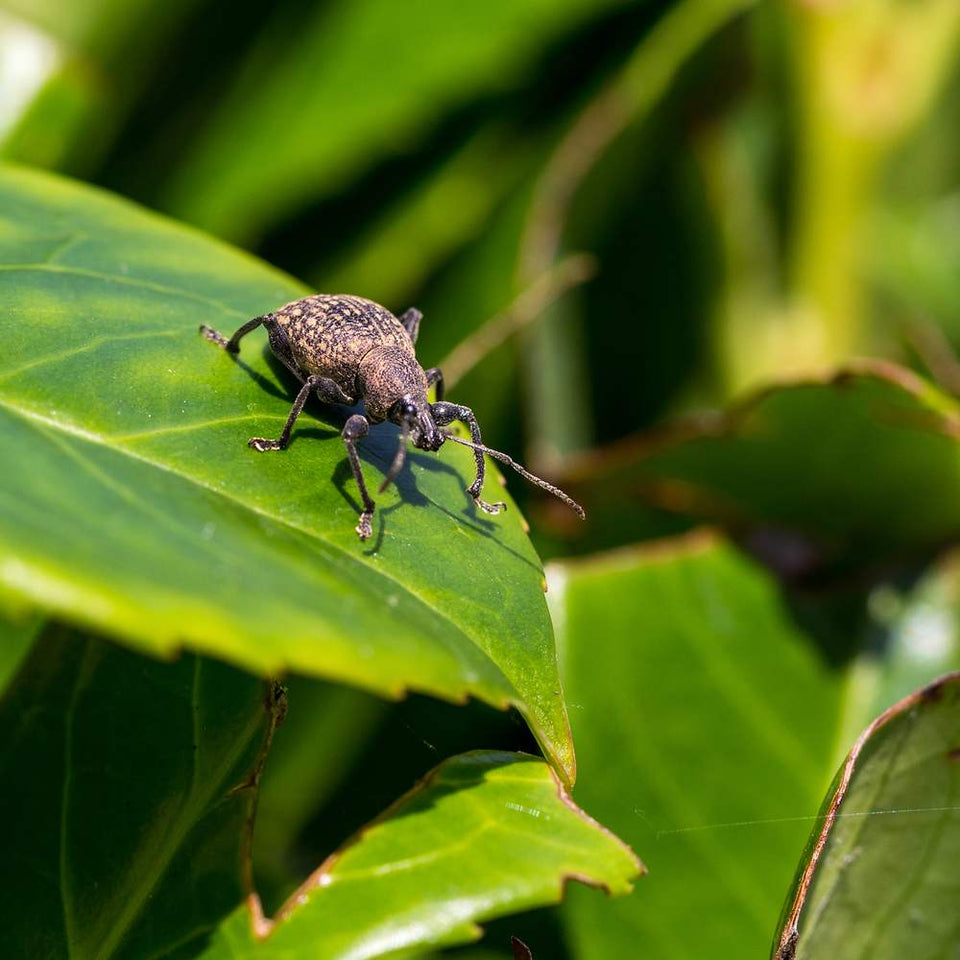

Vine weevil fight
The vine weevil ( Otiorhynchus sulcatus) , also called the grooved vine weevil, is a pest for outdoor plants such as rhododendron, cyclamen, azalea and strawberry. You recognize the pest by the characteristic bites it takes from the side of leaves.
Deploy these heroes
Felti - against vine weevil
Effective at soil temperatures from 10 °C- Regular price
- From €11,95
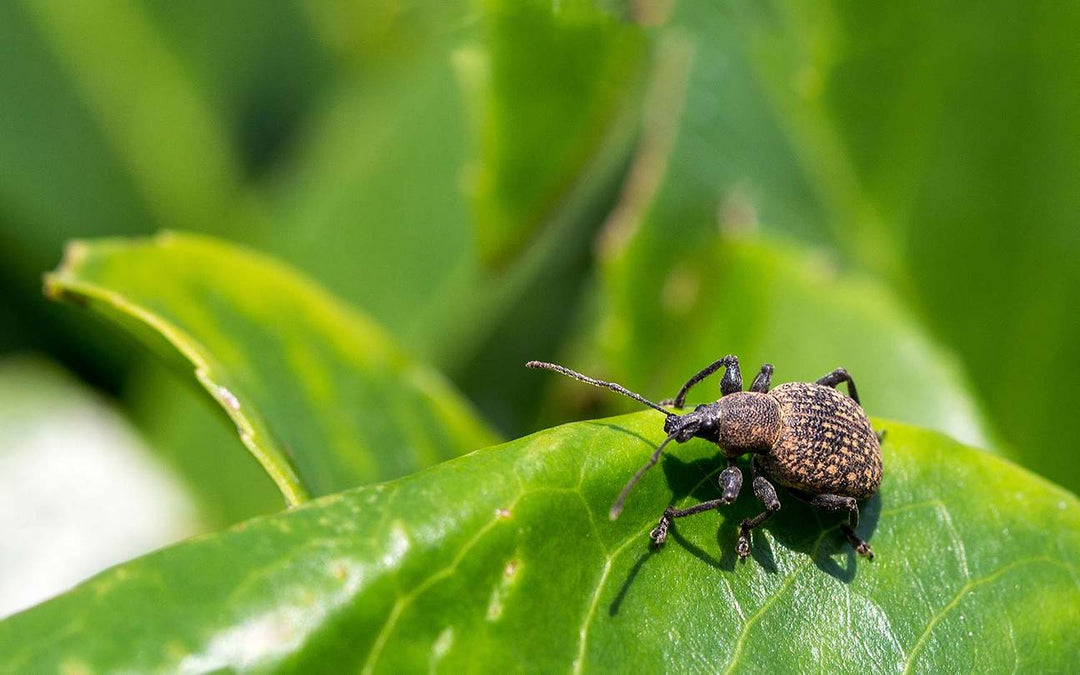
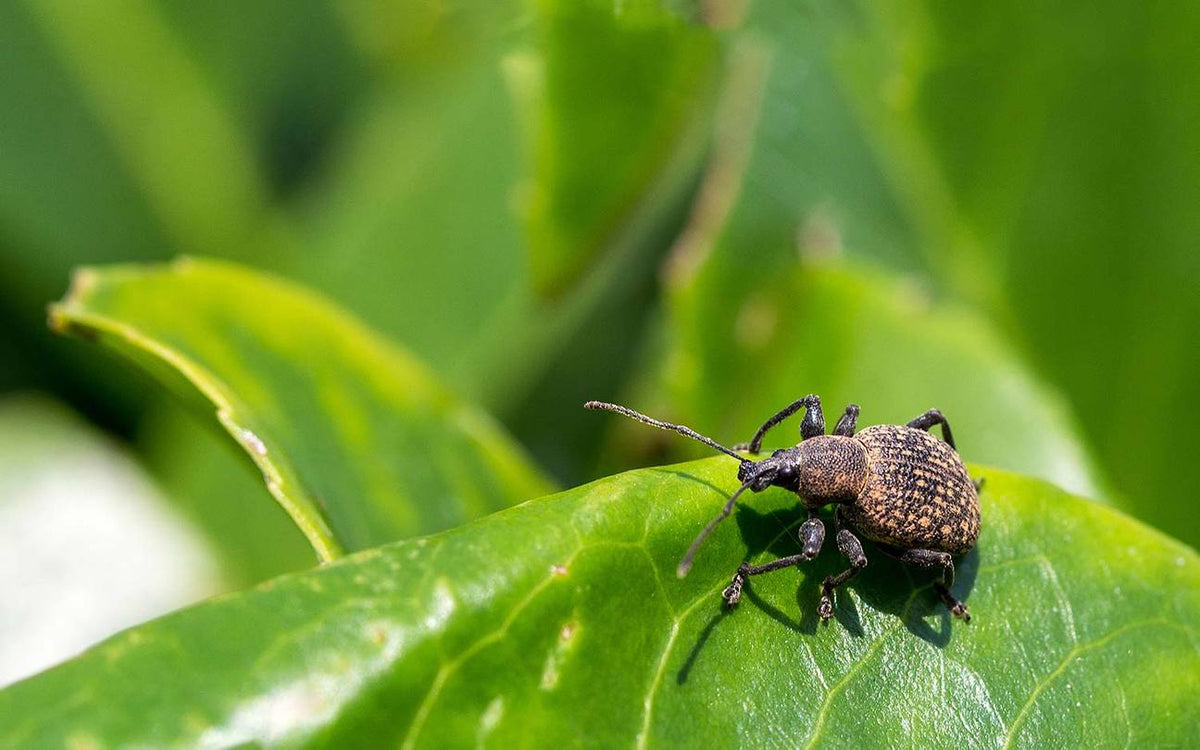
How do I recognize vine beetles?
Adult vine beetles emerge around May. The beetles are 7-10 mm long, brown-black in color with light spots on the back. The beetles cannot fly and can be found on leaves at dusk or at night. During the day, for example, they hide in plant pots or under pieces of wood.
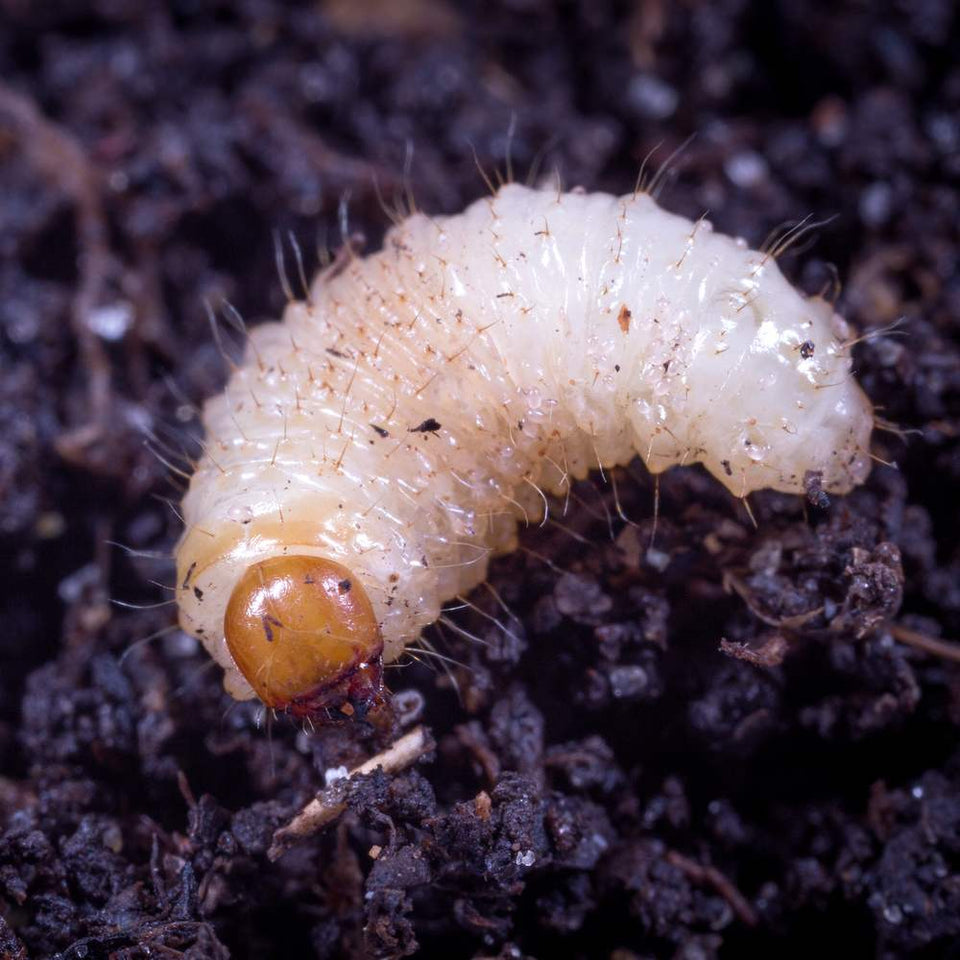

Taxus beetle larvae
The vine weevil lays eggs in the soil of the garden from which larvae hatch. The vine weevil larvae are milky white in color with a brown head. They have no legs, unlike grubs .
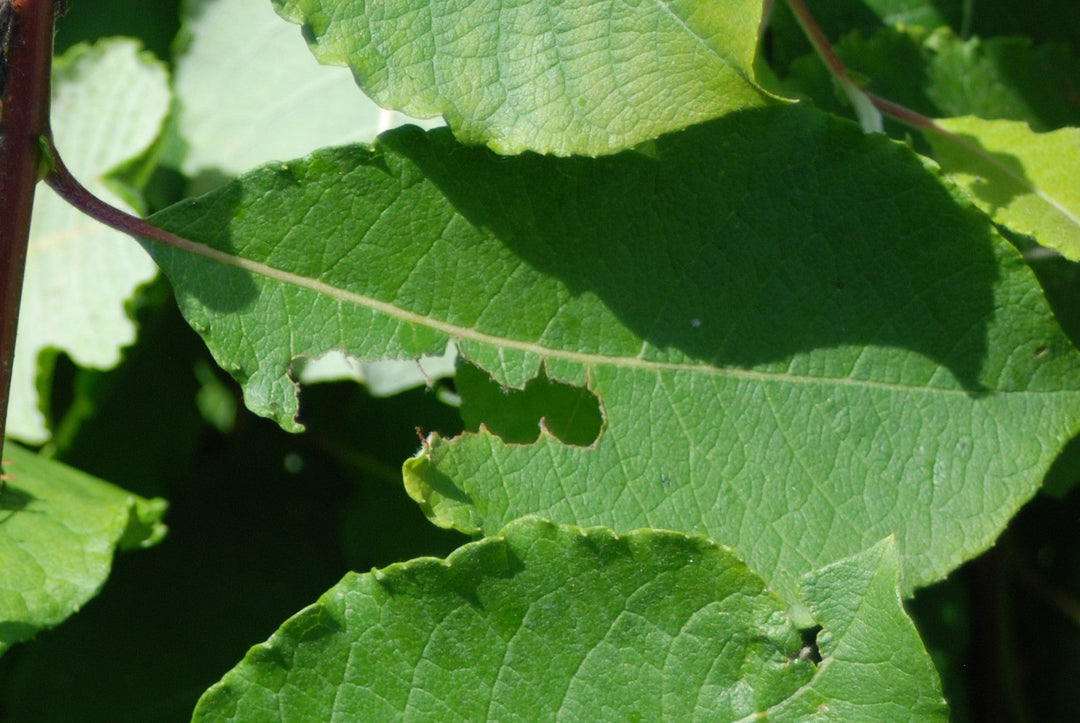

How do I recognize vine weevil damage?
You can recognize vine weevil damage by the characteristic round bites that the beetle takes from the side of the leaves. Taxus beetles can eat many different types of plants such as rhododendron, cyclamen, azalea and strawberry.
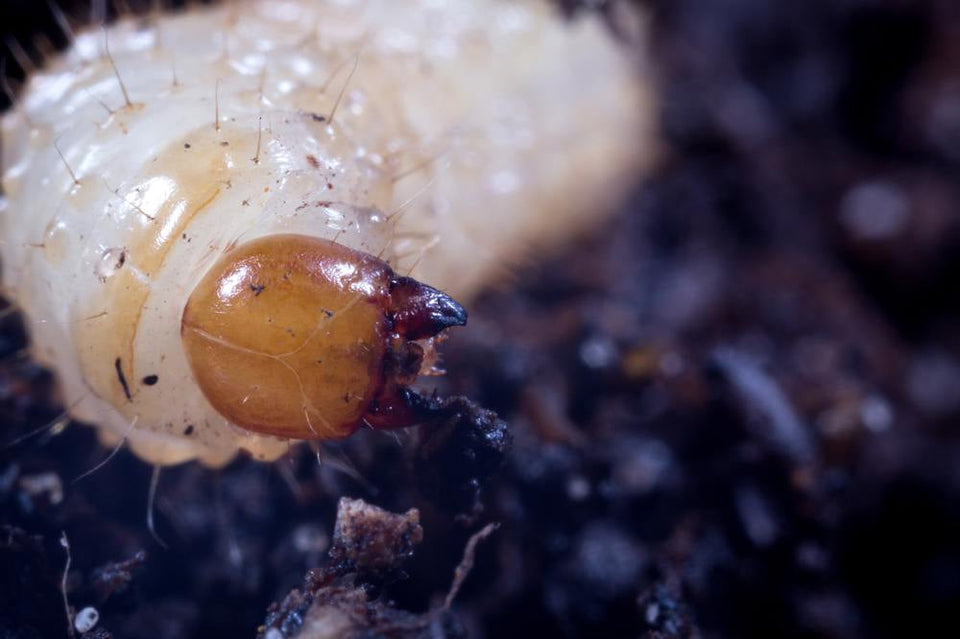

Tax vine beetle larva damage
The larvae in the soil feed on the roots of plants. The damage to the roots is less visible, but certainly no less harmful to the plant.
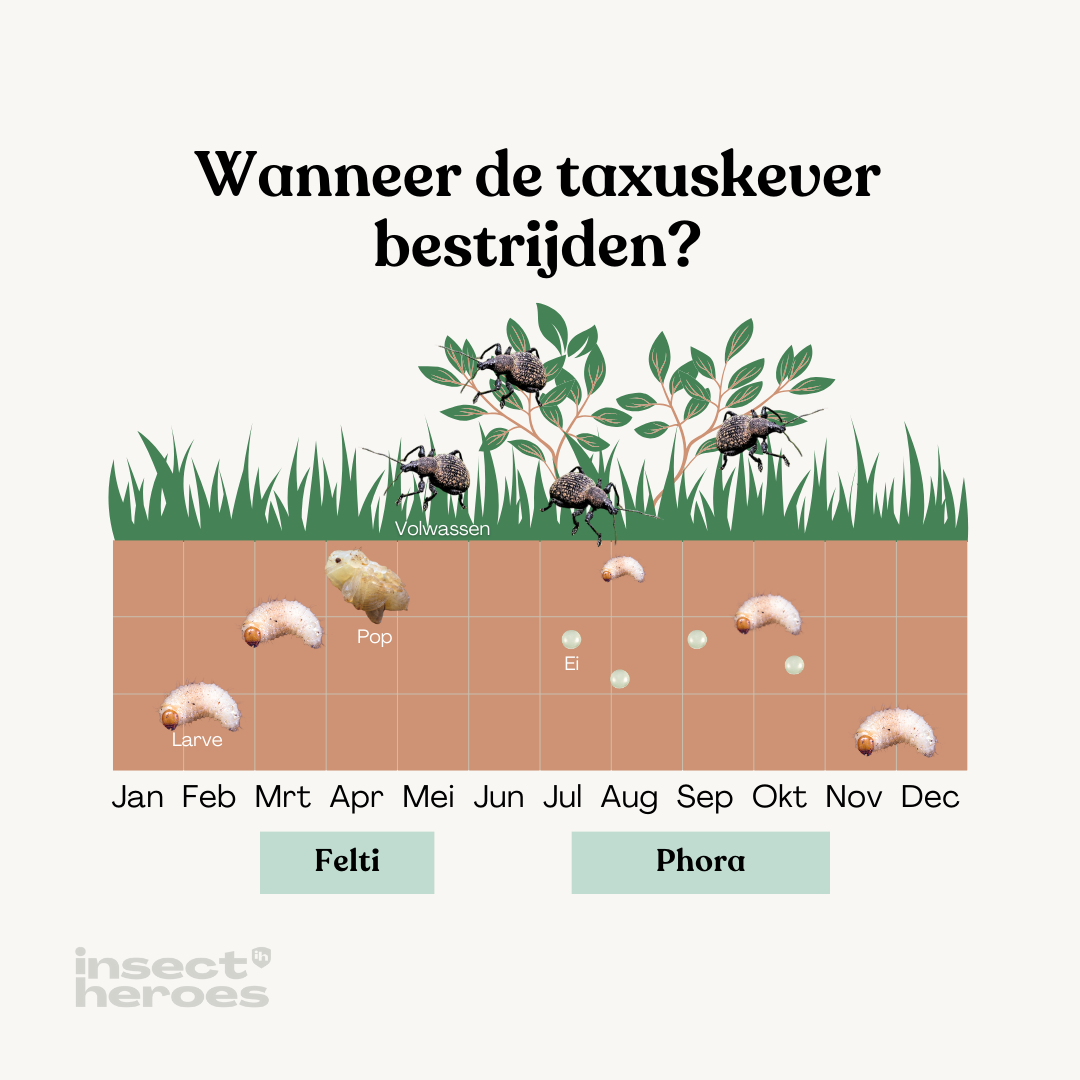

How do I combat vine weevils?
You can combat vine weevil larvae in the soil using nematodes. Felti nematodes can be used in spring and autumn to penetrate and kill the larvae. In summer at a soil temperature of 15 degrees or more, Phora nematodes are very effective in controlling the vine weevil. Phora nematodes are specialized in controlling beetle larvae.
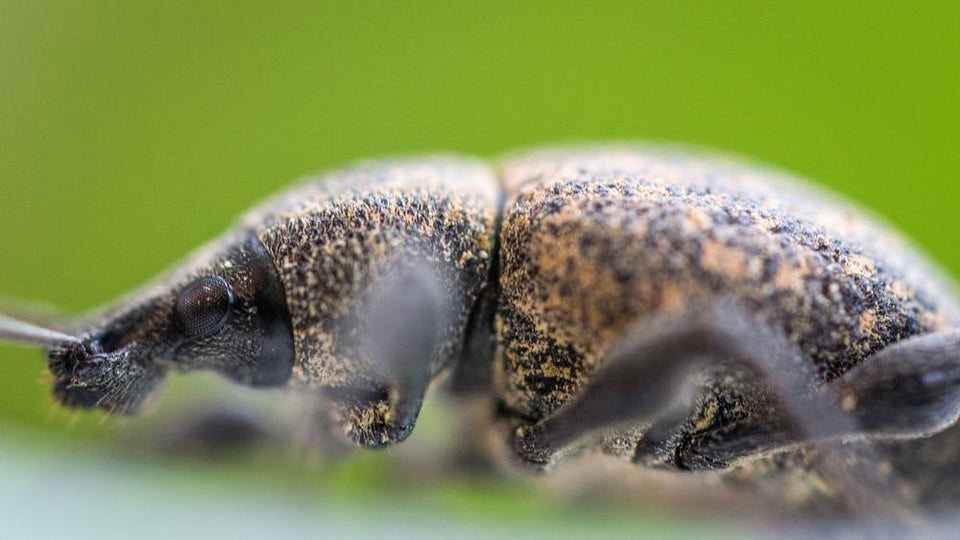

Catching vine beetles
Unfortunately, Felti and Phora nematodes do not work against adult vine weevils. These are best caught at night. Place a grooved wooden plank under the affected plant or shrub. Remove the vine weevil larvae during the day.
Not sure which pest is bothering you?
View our overview page with all pests.









































